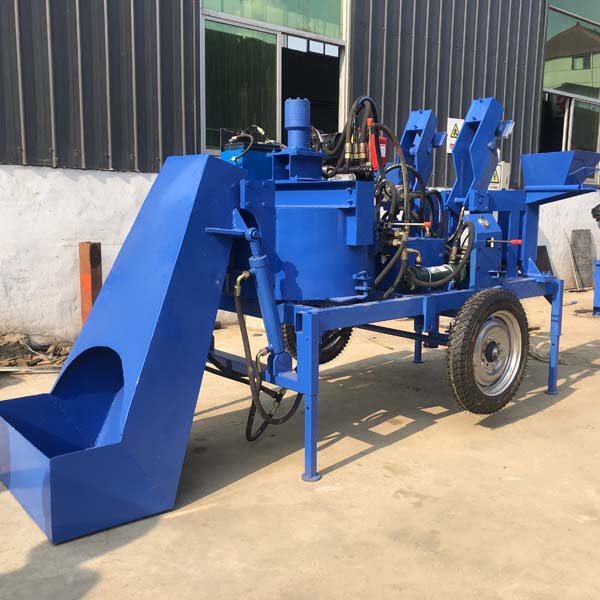
Image source Aiweibrickmachine
Semi-Automatic Block Machines in Post-Disaster Reconstruction
In the aftermath of natural disasters such as earthquakes, hurricanes, floods, or tsunamis, the need for rapid and efficient reconstruction is paramount. Traditional construction methods often struggle to meet the urgent demand for shelter and infrastructure. Semi-automatic block machines have emerged as a crucial tool in post-disaster reconstruction efforts, offering speed, versatility, and sustainability. This comprehensive exploration delves into the role of semi-automatic block machines in post-disaster reconstruction and their impact on affected communities.
Section 1: Understanding Post-Disaster Reconstruction
1.1 The Urgent Need for Reconstruction
Natural disasters can devastate communities, leaving people homeless and infrastructure in ruins. Rapid reconstruction is essential to restore normalcy.
1.2 Challenges of Traditional Construction
Traditional construction methods are often time-consuming, labor-intensive, and less adaptable to the urgent demands of post-disaster scenarios.
Section 2: Semi-Automatic Block Machines as a Solution
2.1 What Are Semi-Automatic Block Machines?
Semi-automatic block machines are versatile machines capable of producing concrete or clay blocks with minimal manual labor involvement, significantly speeding up the construction process.
2.2 Key Advantages in Post-Disaster Scenarios
Semi-automatic block machines offer several key advantages, including speed, efficiency, and adaptability, making them invaluable in reconstruction efforts.
Section 3: Applications in Post-Disaster Reconstruction
3.1 Rapid Shelter Construction
Semi-automatic block machines enable the quick production of building blocks, facilitating the construction of temporary and permanent shelters for affected populations.
3.2 Infrastructure Rehabilitation
Efficient block production supports the repair and reconstruction of critical infrastructure such as schools, hospitals, and roads.
3.3 Disaster-Resilient Structures
Semi-automatic block machines can produce blocks designed for earthquake resistance, enhancing the long-term resilience of rebuilt structures.
Section 4: Case Studies
4.1 Haiti Earthquake (2010)
The devastating earthquake in Haiti highlighted the importance of semi-automatic block machines in rapid reconstruction, allowing for the construction of sturdy housing and infrastructure.
4.2 Hurricane Katrina (2005)
In the aftermath of Hurricane Katrina, semi-automatic block machines played a role in rebuilding New Orleans, providing an efficient solution for restoring damaged neighborhoods.
Section 5: Sustainable Reconstruction
5.1 Sustainable Materials
Semi-automatic block machines can use sustainable materials, such as recycled aggregates and environmentally friendly binders, contributing to eco-friendly reconstruction.
5.2 Reduced Environmental Impact
Efficient block production minimizes construction waste and reduces the carbon footprint of post-disaster reconstruction.
Section 6: Challenges and Solutions
6.1 Logistics and Transport
Ensuring the timely delivery of machinery and materials to disaster-affected areas can be challenging but is critical for successful reconstruction.
6.2 Skilled Labor Shortages
Training local residents in machine operation and block laying can help overcome labor shortages and empower communities.
6.3 Cost Considerations
Initial investments in semi-automatic block machines may be significant, but their long-term benefits often outweigh the costs.
Section 7: Community Empowerment
7.1 Local Participation
Engaging local communities in the reconstruction process empowers them to take ownership of their recovery.
7.2 Skill Development
Training community members in block production and construction skills can create sustainable employment opportunities.
Section 8: Technological Advancements
8.1 Automation and Digital Tools
Continued advancements in automation and digital technologies enhance the efficiency and capabilities of semi-automatic block machines in post-disaster reconstruction.
8.2 3D Printing
Emerging technologies like 3D printing with concrete hold promise for even faster and more innovative post-disaster reconstruction.
Section 9: Future Outlook
9.1 Resilient Communities
The use of semi-automatic block machines can contribute to the creation of disaster-resilient communities, better prepared for future challenges.
9.2 Sustainable Development Goals
The adoption of sustainable and efficient reconstruction methods aligns with global sustainable development goals, promoting resilience, and well-being.
Section 10: Conclusion
Semi-automatic block machines are not just tools of construction; they are instruments of hope and recovery in the wake of devastating disasters. Their ability to rapidly produce building blocks, coupled with sustainability and community engagement, makes them invaluable assets in post-disaster reconstruction efforts. As technology continues to advance, so too will the capabilities of these machines, further accelerating the restoration of communities and the realization of a more resilient and sustainable future. In the face of adversity, semi-automatic block machines stand as symbols of resilience, innovation, and the indomitable spirit of reconstruction.
